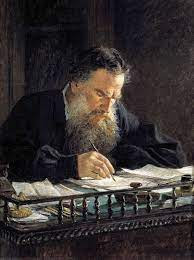200 pages, Paperback 2004, North Atlantic Books
The new millennium has quite been kind to Blavatsky. Quite a
few important publications have seen the light of day, and I will be posting a few book reviews of some of the major releases (actually transferring some old reviews from my theosophy blog, more appropriate here).
This book can be considered a breakthrough in
Blavatskian literature. After more than a century after her passing, Blavatsky has
made it into the canon of western esoteric thinkers, deservedly so. Finally,
her writings are considered worthy of serious academic study. The late,
lamented Nicholas Goodrich-Clarke was one of the most qualified scholars to
attempt this task and he does a creditable job, referencing the better academic
works on theosophy that have emerged since the mid-80s and the most lucid and
accurate theosophical publications. It is refreshing to see such a
fair-minded, charitable, positive appreciation of Blavatsky’s works. Although
at a modest 200 pages, the work cannot claim to be more than a basic
introduction, Goodrich presents well-researched biographical accounts to
frame the text selections of this anthology of her writings.
I will briefly list a few caveats that come to mind:
I find that his references to the over-used W.E. Coleman (pp. 51-52, 132) to be outdated and not very pertinent, although he does refute him. His summary of her notions of human and geological evolution (p. 16) is a little inaccurate. A passage from the Key to Theosophy (pp. 105-06) has a large concentration of outdated or inaccurate references in the original. (To her credit, Blavatsky takes pains to give a lot of references to support her claims and she is pretty accurate, but sometimes they do require some updated explanations). Moreover, he does not necessarily give an indication of the complete, extensive scope of her writings (running to some 20-odd large volumes). So for example, his claim that she later de-emphasized her references to the Kabbalah (p. 76) could be contradicted by pointing out several writings on the Kabbalah dating up to the end of her life.
On the more positive side, most of the major well-known diagrams, including the rare ‘meditation diagram’, are included. Chapters 5 (Mesmerism and Magic) and 6 (Hermetic Philosophers and Rosicrucians) are Goodrick-Clarke’s most incisive, original and well-documented contributions. My caveats do not prevent the book from being a fair, well-researched, accurate introduction to Blavatsky and it deserves commendation for being a pioneering, breakthrough effort in taking Blavatsky seriously as an important thinker. Consumatum Est!
Some extracts:
Blavatskyan Theosophy thereby combines features of Western esotericism familiar from the Hermetic, kabbalistic, and theosophical traditions of the Renaissance and early modern periods with the nineteenth-century interest in Eastern religions in the West. This syncretism demonstrates the modern development of Western esotericism in terms of its capacity to absorb new ideas and influences. Blavatsky’s universal wisdom-tradition of Theosophy involving both Western and Eastern sources gave an important impetus to a new global esotericism. (p. 142)


